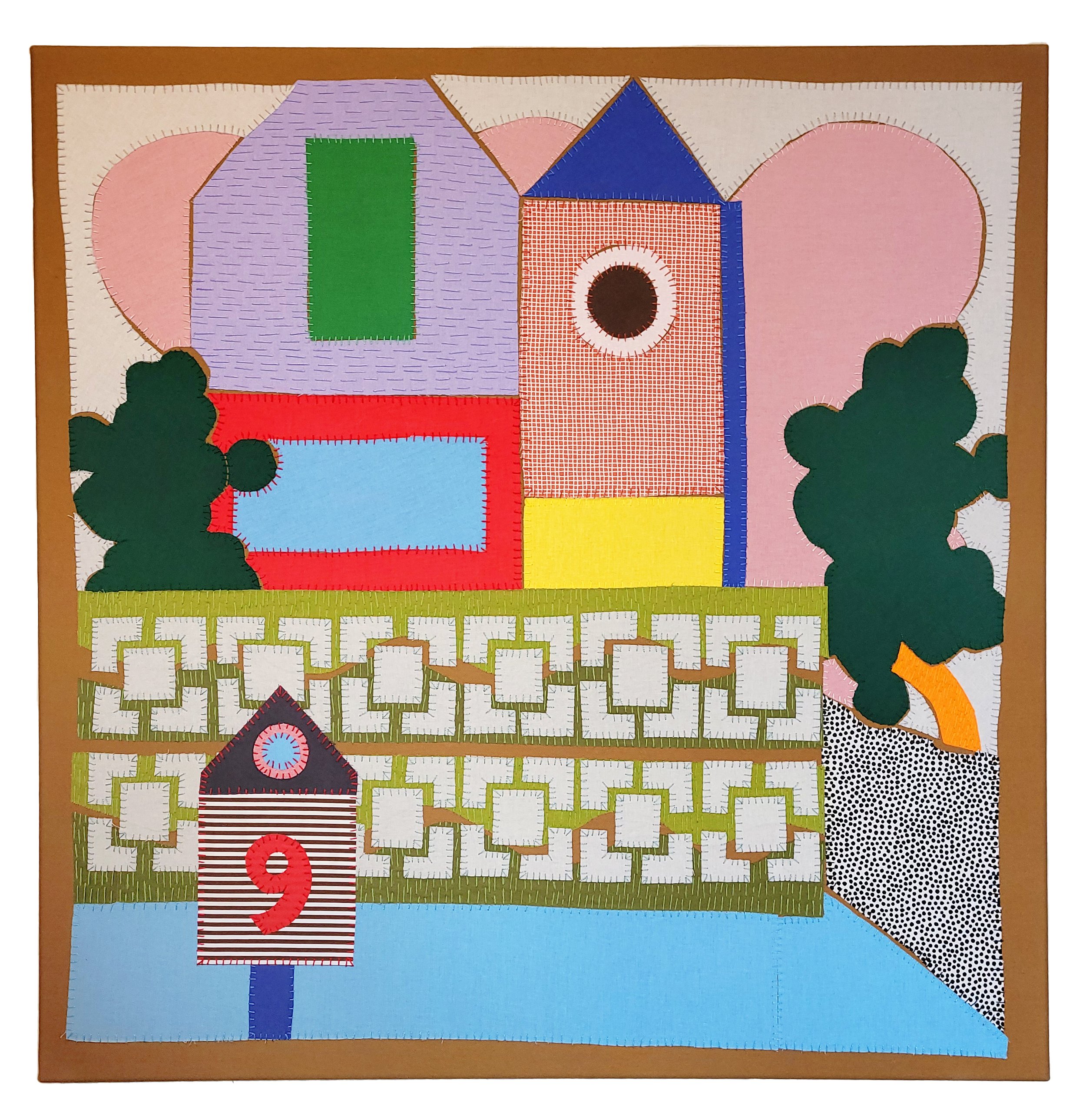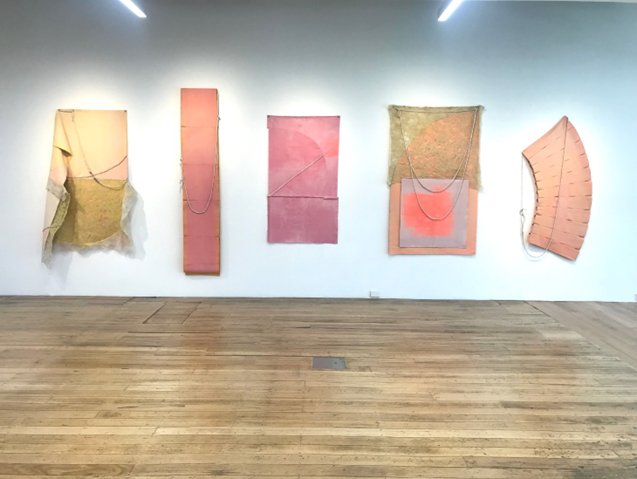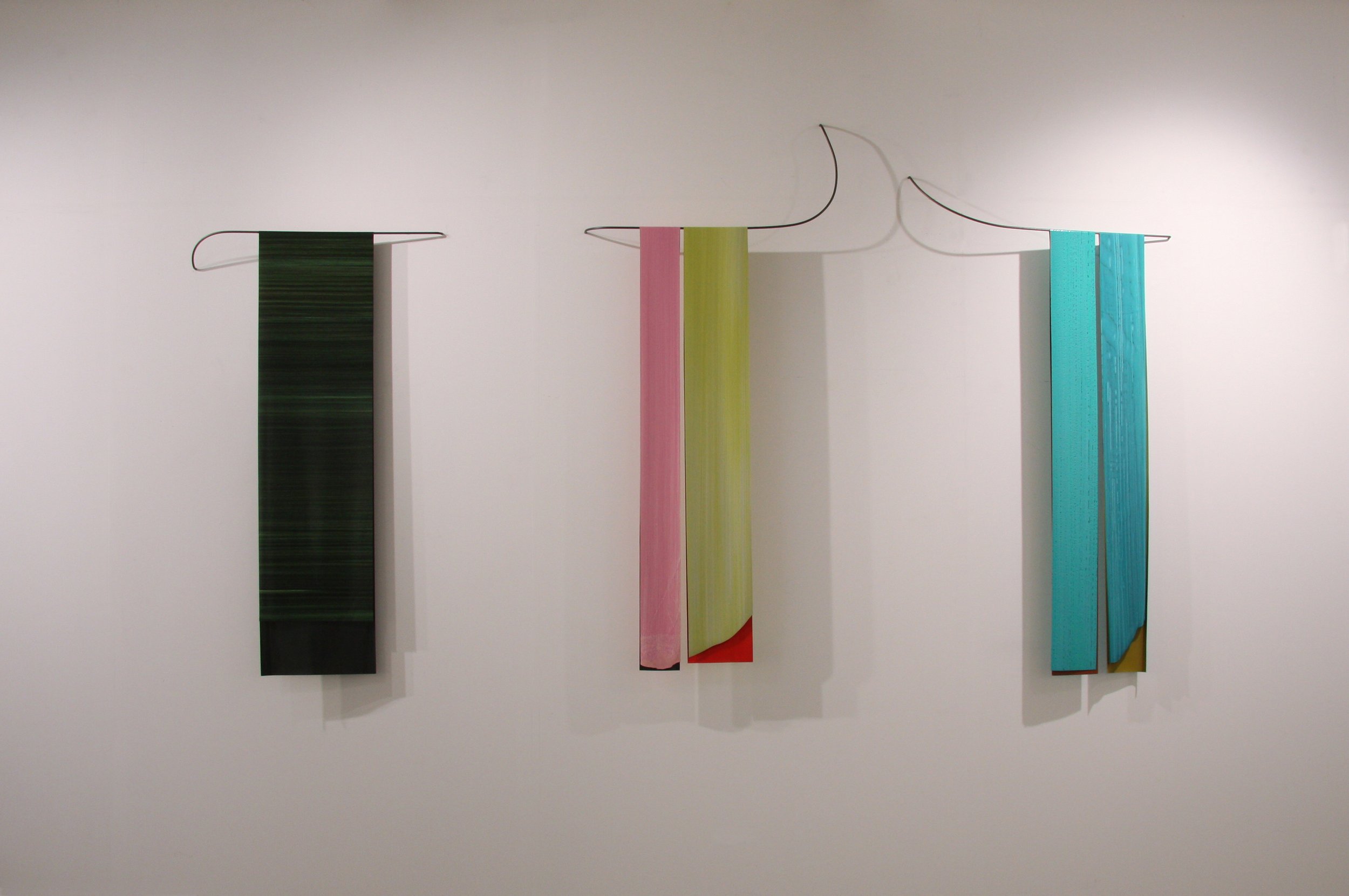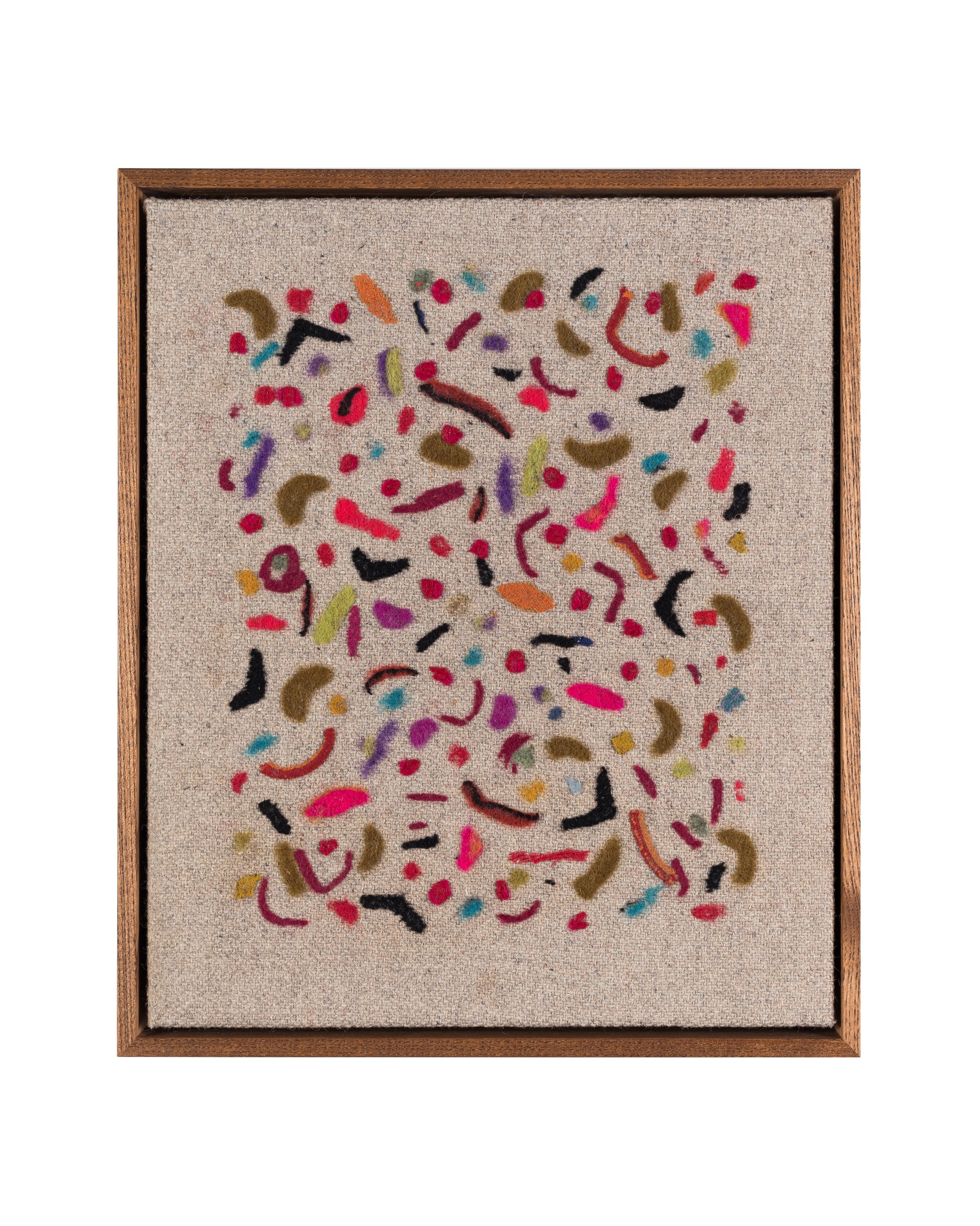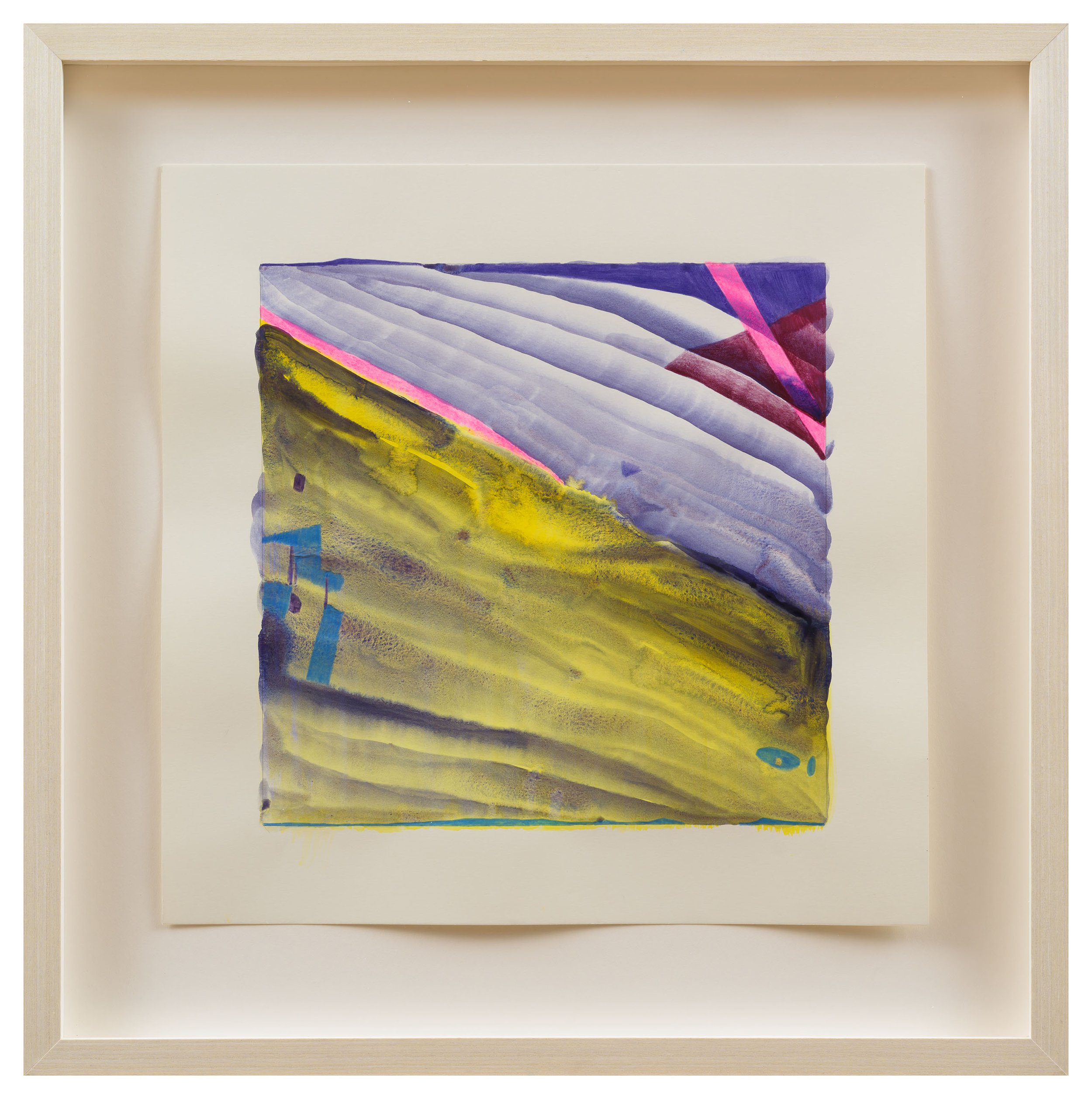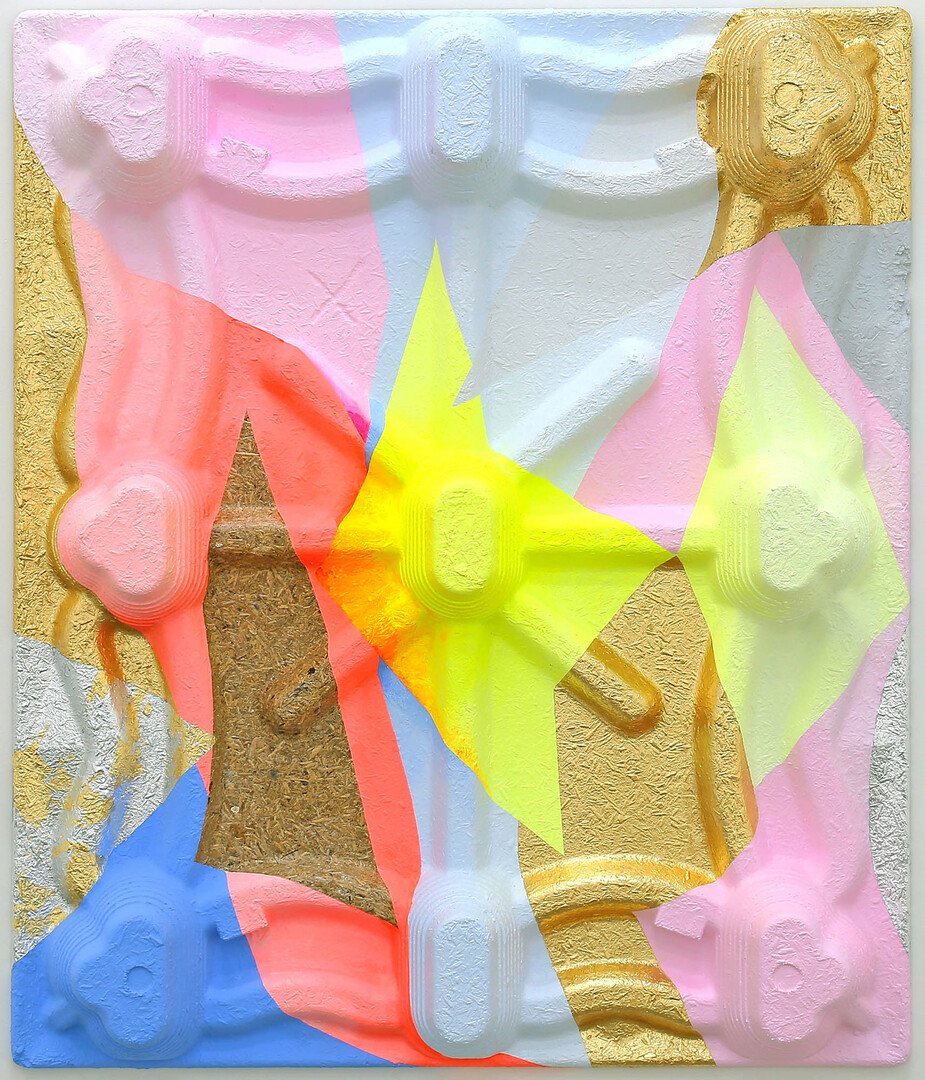23 September – 27 November
Exhibition Opening: Thursday 22 September, 6-8pm
Artist Talk with Julia Holderness: Saturday 19 November, 11am
Ground Floor Galleries
Crosses and Losses features six artists from Aotearoa, working in drawing, painting, and textile. They have research lead disciplines in common, through engagements with areas of biography or art history, for example. In a general sense, the art works on display present forms of abstraction with some vibrant colour. Shapes and hues appear throughout in various media, from the miniature to large scale.
Featuring the work of
Alice Alva / Helen Calder / Emma Fitts / Julia Holderness / Miranda Parkes / Krystie Wade
ABOUT THE ARTISTS
Alice Alva, the lights are on but no one's home, 750 x 750 mm, stranded embroidery cotton, cotton fabric
Alice Alva is fascinated by the function of embroidery and textile-based crafts historically employed to domesticate a space, rather than to adorn the walls of an art gallery. Furnished objects such as framed embroideries and woven rugs, often act as a code to be interpreted by, and inform those who enter a space how to interact and behave within its confines. Alva is drawn to the laborious process employed by traditional embroidery, textiles and craft techniques and driven by the obsessive act of repetition. Bauhaus artist and educator Anni Albers (1899 - 1994) is one artist of influence, notably with her exploration of textiles and thread.
Helen Calder’s work has always been concerned with the experience of colour and materiality, particularly within painting. She creates skins of paint (many layers of acrylic applied methodically), often long in shape with an intensely rich hue and surface. In Calder’s current work her skins have steel supports, and they appear protruding from the wall. Calder was inspired by research in the Supports/Surfaces movement (France, 1960s/1970s), notably their deconstruction of painting into two components. She is interested in the link that painting has with architecture and textiles through history.
Helen Calder, Yellow Remnant, 2022, Acrylic and Steel
Courtesy of the artist and Bartley & Company
Emma Fitts, Acts of Feeling: Arcs, Knots and Plains , 2022, Canvas, acrylic and wool
Courtesy of the artist and Melanie Roger Gallery
Emma Fitts uses a research methodology for developing work that draws upon multiple sources (such as the disciplines and practices of other artists). Her practice is both a view backwards in time and to the present day; of particular interest is the lives of other artists. Fitts’s Acts of Feeling: Arcs, Knots and Plains (2022) is a sculptural wall-mounted textile inspired by Beatrice Tinsley (1941-81), an astronomer who discovered the life cycle of galaxies. This work is also related to the architecture of the observatory at Tekapō, with canvas shapes echoing the shape of the dome.
Julia Holderness, Florence Weir, Mixed Spring Flowers c 1936, 2021, felted wool textile
Private Collection
In her recent practice Julia Holderness has produced large bodies of multi-faceted work, interconnected in enquiry and research. On display in Crosses and Losses are some textile designs attributed to Florence Weir (1899 -1979), an historical artist with her own autobiography (‘the only known New Zealander to have studied at the Bauhaus…’). Weir is not meant to be a pseudonym as Holderness is acknowledged in exhibition material and as facilitator. Rather her fabrication is embodied by Holderness ‘like an artistic guide from a different realm’ who reappears and visits the present. Holderness aims to present Weir as a form of questioning - how should we provide agency to female voices from the past? Or, how can we develop alternative stories to challenge dominant art historical narratives and structures?
Miranda Parkes, mister piggy, 2020, Acrylic, gold and silver foil, varnish on compressed wood pallet
Courtesy the artist and Jonathan Smart Gallery
Miranda Parkes works within the field of expanded painting and has a process-driven studio practice. Her artworks on display are made on and in response to various substrates. Parkes has re-worked pages extracted from an old illustrated art history book* in a suite of painted collages titled Exploded Book: Later Italian Painting (2020). The original photogravure plates (intaglio printmaking process) form the ground for an array of media - fragments from magazines and catalogues, her daughter’s mark-marking, and paint. These works create a conversation between European art history, the Renaissance period, and the artist with her fluid identity as a Pakeha woman in contemporary Aotearoa. The result is a joyful irreverence, a series with much bubbling colour, which questions and replaces this problematic history. **
* Tancred Borenius,”Later Italian Painting" ("From Titian to Tiepolo"), Avalon Press Collins, 1946.
** Referenced from notes provided by Miranda Parkes.
Krystie Wade, Listening
Image credit to Sait Akkirman
The coloured drawings by Krystie Wade in Crosses and Losses have a beautiful complexity within an intimate scale. Wade has described her work as reflections of her life and likens colour to musical qualities - chords and notes. These drawings can be regarded as diary entries; some have titles inscribed presenting a special thought or moment from the day. Art making forms part of Wade’s spiritual process. Their creation is a sedative, or tonic, for the strain of modern urban life where one becomes transported into another infinite space or realm. Her aim is for the viewer to observe her work and share the same experience.



